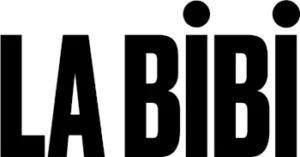With works ranging from faux slime to hyper-realistic glass flowers, three artists examine our relationship to nature — and share hope along the way.

For years, TEFAF Maastricht has been famous for its botanical arrangements: flower towers, cascades of blossoms, and eye-catching displays that redefine the term “wallflower.” The theme is a fitting ode to spring in tulip country and a nod to nature’s role in inspiring art, from ancient cave drawings to Van Gogh’s “Sunflowers.”
Now, at a watershed moment for the planet, nature-themed art is taking on new meaning. Artists are using their work to raise awareness of the harms humans have done to the environment. But not all of their creations are full of doom and gloom. For this year’s fair, three artists have transformed their love of botany, biology and ecology into sculptures depicting futuristic organisms, multispecies collectives, and flora infused with emotion. These pieces celebrate actions that can help us heal the planet: connecting with plants and animals, and living in awe of nature.

Aljoscha
Aljoscha’s amoebic artworks look like the love children of smoke and slime molds. Floating in midair as if they oozed out of a wormhole in the space-time continuum, the sculptures radiate shades of chartreuse, neon pink and aurora borealis green. To the artist, these acrylic and silicone creations are “potential life-forms.” They flow from his view of himself as “a biological process running in an utterly biological world.”
Growing up in eastern Ukraine, the artist was enthralled by nature — the swaying grass on the steppe and ever-morphing clouds moving over lakes. Lately, his birthplace has been barraged by missile attacks during Russia’s invasion. In his philosophy, humans have mutated into the planet’s most dangerous predators, representing an existential threat to all forms of life. But he believes we will mutate beyond this, expanding our capacity for wisdom, empathy and happiness.
“I hope we can transform ourselves into a new species which cares for all kinds of life and for maintaining the highest possible level of biological diversity on Earth,” the artist, who has lived in Düsseldorf, Germany, more than 20 years, and prefers to use his professional name, Aljoscha, wrote in an email. One day, he thinks, humans will dwell in houses made from living ecosystems. Artists will create works from living substances. Museums will function as zoological gardens.
Aljoscha’s art embodies this vision of a more utopian future. His installation at TEFAF, exhibited with Düsseldorf’s Beck & Eggeling International Fine Art, is titled “The Paradise Engineering: Metamorphosis into a New Species, Free from Suffering, Fear, Aggression, and Intolerance to the Unknown.”
Through this display of biology-inspired imaginary beings, “I am trying to promote the message of a necessary change in our attitude toward the wonder of life,” he said. “I believe that, more than ever, we have a great chance to compose a paradise in our heads and to heal the wounds we cause the Earth.”

Junko Mori
The metalworker Junko Mori’s creative process mirrors the uncontrollable nature of evolution. First, she said, she fills her mind with images: flowers from her gallerist’s Instagram feed; sea creatures she sees on surfing and bodyboarding trips; memories of bacteria she watched wriggling under a microscope during biology class. Then, she taps into this primordial soup of ideas, and lets everything propagate and cross-pollinate. Working out of a converted pig shed at her home in North Wales, she forges, welds, and hammers every silver or steel component, without any final design in mind.
“I let them grow like the mutation of cells,” said Ms. Mori, who is exhibiting at TEFAF with Adrian Sassoon gallery of London. If the sculpture starts to look predictable, she changes its shape. “I deliberately create a moment of mutation,” she explained. “Then it’s about repeating these accidental mutations so the final outcome is something I could never imagine.”
Ms. Mori’s creations look like chimerical species — hybrids of barnacles and cumulus clouds, a baobab and a weeping willow, a waterlily and fiddlehead ferns, sea urchin spines and a swarm of starlings. These multispecies forms communicate her feelings about nature, influenced by her life in the Welsh countryside. She and her woodworker husband compost manure from surrounding farms, and she is fascinated by this collaboration between bacteria and fungi that makes the vegetables that she grows flavorful. “These tiny microcosms live together in a beautiful way and give space to each other,” she noted.
She wants her art to visualize those harmonious relationships and offer an antidote to the damage humans have done to the environment. “My work celebrates the beauty we have been given and represents coexisting in nature,” she said.

Lilla Tabasso
At first glance, Lilla Tabasso’s artworks could be mistaken for bouquets of dried flowers. But look closer, and you might marvel that these floral arrangements, as spindly as spun sugar, are fashioned from glass. Ms. Tabasso achieves this hyper-realism through her skill at shaping Murano glass in the flame of a blowtorch, and by depicting the natural process of decay. In one piece, firecracker-shaped flowers fade alongside sprays of straw-colored grasses. In another, weeds frozen under a dusting of snow wilt into a clod of root-tangled soil. “There is beauty in decaying flowers,” she said, “because death is a part of life, and real beauty is the perfect combination of imperfections.”
The Milan-based artist initially studied biology and botany before realizing she wanted to work with nature in a more creative way. “For me, nature is the most beautiful medium for talking about emotions and the human condition,” said Ms. Tabasso, who is showing her work with the first-time TEFAF Maastricht exhibitor Caterina Tognon gallery of Venice.
Her creations capture the fragile human condition in glass and other materials. A plant piercing through a box expresses the desire for freedom. A vase of flowers divided into light and dark illustrates the chiaroscuro quality of human nature. A wispy papyrus reed, the source of ancient Egyptian paper, honors plants’ contributions to creative inspiration. An elaborately decorated but empty vase crystallizes the hollow feeling we get when we neglect our inner landscapes.
Through these glass encapsulations of emotions and conditions — beauty, suffering, desire, deterioration — Ms. Tabasso suggests that humans and the rest of the living world share the same fate. “It’s all connected,” she said. “We are destroying nature, but we are doing the same to ourselves.”
Still, Ms. Tabasso conveys a message of hope through one of her pieces, in which her glass flowers emerge from cracks in concrete: “Nature,” she said, “always prevails.”
Source: https://www.nytimes.com







